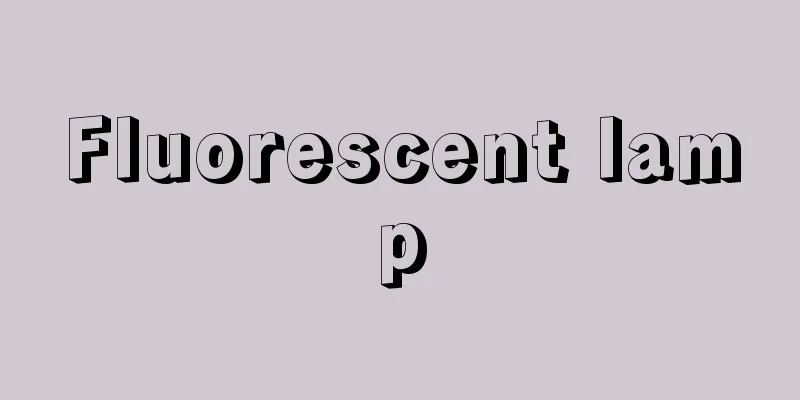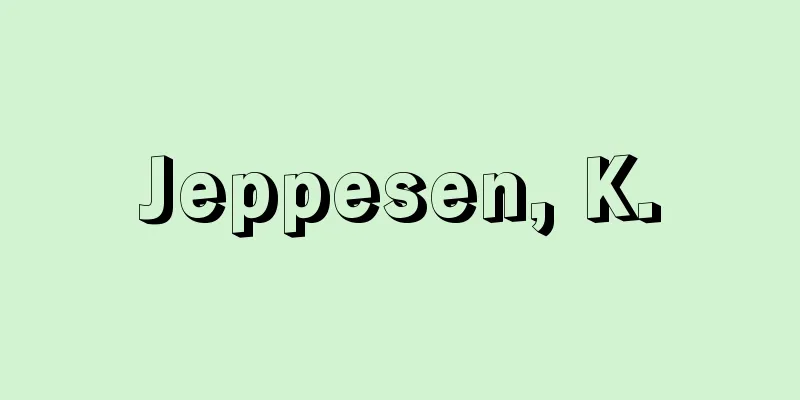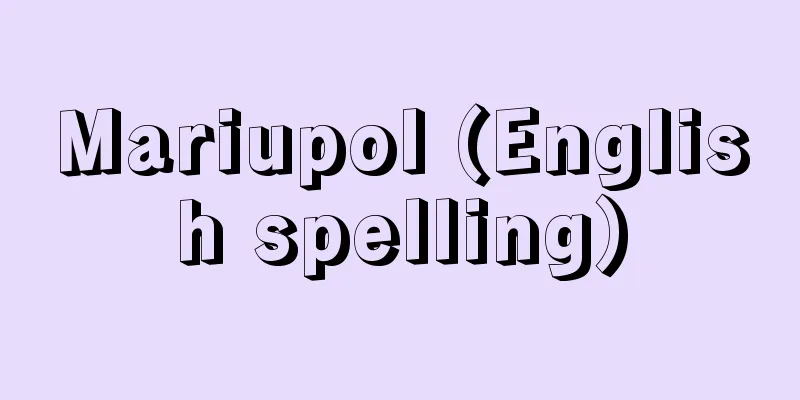Fluorescent lamp

|
A discharge lamp that converts ultraviolet light generated by discharge in low-pressure mercury vapor into visible light using phosphors and emits light. It is also called a fluorescent discharge lamp. In the Japanese Industrial Standards (JIS), the light-emitting part (light source) including the base is called a fluorescent lamp, and the whole system including the ballast and lighting equipment is called a fluorescent lamp. Fluorescent lamps come in a variety of light colors, such as daylight, natural white, white, and warm white, depending on the type of phosphor. They are efficient, have a long life, low brightness, and good color rendering, so straight tubes and circular tubes are the most commonly used for lighting in Japan. Among fluorescent lamps, those designed specifically for high frequency lighting (called Hf fluorescent lamps) are highly efficient, light up instantly, and have little flickering, but require a special device to light them. In addition to the current type, fluorescent lamps used to be discharge lamps with nitrogen or argon gas sealed in a uranium glass bulb. These were used for decoration, etc., because the ultraviolet light from the discharge caused the uranium glass to emit green fluorescence, and argon gas to emit reddish purple light. However, they are rarely used nowadays. [Akio Obara and Makoto Bessho] historyFluorescent lamps were first commercialized in 1938 by American George E. Inman (1895-1972), using hot cathode fluorescent lamps, and many were used at the New York World's Fair the following year in 1939. In Japan, they were commercialized in 1940 (Showa 15), and 126 were used to light the murals of the Golden Hall of Horyuji Temple. They became popular after World War II, when daylight fluorescent lamps (1948) and 40-watt white fluorescent lamps (1949) were commercialized. Furthermore, calcium halophosphate phosphor, invented by Alfred H. McKeag et al. in 1942, was put to practical use in Japan in 1951 (Showa 26), and its efficiency was greatly improved. Meanwhile, the circular fluorescent lamp was completed in 1953 as a 30-watt lamp unique to Japan that could be turned on at 100 volts, and its popularity increased rapidly with the development of lighting equipment suitable for Japanese homes. [Akio Obara and Makoto Bessho] structureThe inner wall of the glass tube is coated with phosphor, and the filament electrodes on both ends are double or triple coils of tungsten wire coated with oxides of barium, strontium, calcium, etc. that easily emit thermal electrons. A small amount of mercury and argon are sealed inside the glass tube. [Akio Obara and Makoto Bessho] principleDue to the nature of the discharge phenomenon in fluorescent lamps, once discharge begins, the lamp current continues to increase (called a negative characteristic) and destroys the electrodes, so a ballast such as a choke coil is used to keep the current below a certain value. A glow starter is often used to light the lamp. When voltage is applied by a switch, a glow discharge occurs between the bimetal electrode of the glow starter and the fixed electrode. This discharge heats the bimetal electrode, which comes into contact with the fixed electrode. At this time, current flows through the filament electrode of the lamp, heating it to a temperature at which it easily emits thermoelectrons. During this time, the bimetal electrode cools, and a few seconds later, the moment it separates from the fixed electrode, a pulse voltage is generated by the inductance of the ballast and thermoelectrons are emitted from the filament electrode, starting the lamp and causing an arc discharge. Ultraviolet rays emitted by the arc discharge in low-pressure mercury vapor excite the phosphor, causing it to emit visible light. Lamps that are lit by a glow starter are called starter-type fluorescent lamps. There are also rapid start fluorescent lamps. These have a conductive film or conductor attached to the inside or outside of the glass tube to make it easier to start, and the ballast has a filament electrode heating circuit, so they light up instantly (about 1 to 2 seconds). No glow starter is required. They are widely used in buildings and factories. Also, slim line (instant start) fluorescent lamps have a cold cathode that is not preheated, so they light up instantly by applying a high starting voltage. They are used in store showcases, etc. [Akio Obara and Makoto Bessho] kindsThe amount of light emitted by fluorescent lamps is generally expressed in watts. Tubes come in 10-40 watts for general lighting, 4-8 watts for low wattage, 60-110 watts for high output, and 110-220 watts for ultra-high output. Circular tubes come in 20-40 watts and U-shaped. Compact fluorescent lamps have the same base as a light bulb (screw-in type) and the arc tube is saddle-, U-shaped, or annular and is integrated with the ballast. They also come in ball, cylindrical, and disc shapes, and come in wattages between 13 and 23 watts. Light colors include daylight, white, neutral white, warm white, and incandescent, which are all based on efficiency, and those with good color rendering include high color rendering and ultra-high color rendering types for color evaluation.Furthermore, there are three-wavelength emission lamps (combining phosphors that emit light in narrow bands of red, green, and blue) that are excellent in both efficiency and color rendering. There are also energy-saving lamps that consume 2 to 10% less power than conventional lamps while maintaining the same brightness. These lamps are filled with a mixture of krypton, argon, neon, etc. (or argon alone) and have a thinner glass tube diameter of 26 to 29 mm (previously 32 mm). In addition to the above, there are other special fluorescent lamps such as the following: (1) Reflective type: A lamp with a reflective coating on the inside of the glass tube to increase the downward light intensity. It is suitable for dusty places. In addition, electrophotography uses a phosphor that emits green light. (2) Low temperature lamps: Lamps that can be lit even at temperatures as low as -20°C. They are used in combination with a special heat-retaining glove and a special ballast. They are used in freezers and cold regions. (3) DC Use: Used for DC power sources such as emergency lighting in vehicles, ships, buildings and factories. (4) For UV protection (to prevent fading): A lamp that has a UV-absorbing film applied to the inside or outside of the glass tube to block UV rays. Suitable for lighting in art galleries and museums. (5) For plant cultivation and ornamental purposes: Efficiently emits red and blue light, which are well absorbed by plant chlorophyll. (6) For insect repellent (insect repellent): Insects are attracted to near ultraviolet and blue light, so these lights are reduced. (7) Insect trapping: In contrast to insect repellents, this lamp has a high concentration of blue and near-ultraviolet light, and is designed to match the phototaxis of insects. It is used in conjunction with a trapping or extermination device. It is used in orchards, livestock sheds, suburban inns, restaurants, etc. (8) Health Ray Lamps: These lamps have health benefits such as sunburn and vitamin D synthesis through ultraviolet rays (health rays) with wavelengths of 280 to 320 nanometers (1 nanometer is 1 billionth of a meter). They use special glass tubes that block ultraviolet rays of 270 nanometers or less. They are used as a substitute for sunbathing, as well as for medical treatment and livestock breeding. (9) For photochemical reactions: Near ultraviolet rays with wavelengths of around 300 to 400 nanometers have a strong photochemical effect, so these lamps efficiently generate this light. They are used in photoengraving, copying (diazotype), and promoting chemical reactions. (10) Black Light (Blue) This lamp uses a special deep purple glass tube that blocks visible light, and efficiently emits only ultraviolet light with wavelengths of 300 to 380 nanometers. It is used for fluorescent inspection of metal finishing and textiles, identification of jewelry and art objects, and decorative lighting for stages, etc. In addition to the above, the commonly known germicidal lamp has almost the same structure as a fluorescent lamp. [Akio Obara and Makoto Bessho] CharacteristicsFluorescent lamps are more efficient than incandescent bulbs, consuming one-third to one-quarter of the power. They have the advantage of soft light and less radiant heat. They last 5 to 10 times longer (5,000 to 10,000 hours). They should be used at plus or minus 6% of the rated voltage, otherwise the tube will blacken and its lifespan will be shortened. Also, if the voltage is too low, the lamp will not light up. If the lamp is turned on too frequently, the electron emitting material (emitter) will wear out and its lifespan will be shortened. The characteristics vary depending on the ambient temperature, and it is designed to be most efficient at 20 to 25°C. If it is used at a temperature other than 5 to 40°C (10 to 40°C for rapid start types), pay attention to keeping it warm and dissipating heat. Some lamps that have reached the end of their lifespan have a luminous flux that is reduced to less than 70% of the original value, making them uneconomical. Also, clean the lamp when it is dimmed due to dust. Fluorescent lamps generate high-frequency radio vibrations near the electrodes, which can cause reception problems. To prevent this, a noise-preventing capacitor is placed in parallel with the lamp inside the fixture. In addition, noiseless fluorescent lamps that reduce noise by improving the lamp's electrode structure (such as by increasing the coil pitch of the filament) are becoming more common. [Akio Obara and Makoto Bessho] [Reference items] | | | | |©Shogakukan "> Fluorescent lamp structure and lighting circuit ©Shogakukan "> Principle of fluorescent light emission Source: Shogakukan Encyclopedia Nipponica About Encyclopedia Nipponica Information | Legend |
|
低圧の水銀蒸気中の放電によって発生した紫外線を蛍光体によって可視光に変換し、光を出す放電灯。蛍光放電灯ともいう。日本工業規格(JIS(ジス))では、口金を含めた発光部分(光源)を蛍光ランプといい、安定器、照明器具などを含めた全体のシステムを蛍光灯といって区別している。蛍光ランプは蛍光体の種類によって、昼光色、昼白色、白色、温白色など、種々の光色のものがあり、効率、寿命とも優れ、輝度が低く、演色性もよいので、直管形、環形など、日本では照明用としてもっとも多く使用されている。 蛍光ランプのなかでも、高周波点灯専用形蛍光ランプ(Hf蛍光ランプという)は高効率で、即時に点灯し、ちらつきが少ないという特長をもつ。ただし、点灯には専用器具が必要である。 なお、現在のものとは別に従来ウランガラス球に窒素またはアルゴンガスを封入した放電灯を蛍光灯といっていた。これは放電による紫外線によってウランガラスが緑色の蛍光を発したり、また、アルゴンガスの場合は赤紫色に発光するもので、装飾などに用いられた。しかし、現在ではほとんど用いられていない。 [小原章男・別所 誠] 歴史蛍光ランプは1938年、アメリカのインマンGeorge E. Inman(1895―1972)によって、熱陰極蛍光ランプが実用化され、翌1939年ニューヨーク万国博覧会に多数点灯された。日本では、1940年(昭和15)に実用化され、法隆寺金堂の壁画模写の照明として、126灯が点灯された。一般に普及したのは第二次世界大戦後で、昼光色蛍光ランプ(1948)、40ワット白色蛍光ランプ(1949)などが製品化され、さらに1942年マッキーグAlfred H. McKeagらによって発明されたハロリン酸カルシウム蛍光体が、1951年(昭和26)に日本でも実用化され、効率が大幅に向上した。一方、環形蛍光ランプは、100ボルト電圧で点灯できる日本独自の30ワットのランプとして1953年に完成し、日本の住宅に適した照明器具の開発などに伴って普及が急激に進んだ。 [小原章男・別所 誠] 構造ガラス管の内壁に蛍光体を塗布し、両端のフィラメント電極はタングステン線の二重、または三重コイルに熱電子を放出しやすいバリウム、ストロンチウム、カルシウムなどの酸化物が塗布されている。また、ガラス管内には少量の水銀とアルゴンが封入されている。 [小原章男・別所 誠] 原理蛍光ランプは放電現象の性質上、放電が始まるとランプ電流が増加し続け(負特性という)電極を破壊するので、電流をある値以下にするため、チョークコイルなどの安定器を用いる。 点灯にはグロースターター(点灯管)を用いることが多い。スイッチによって電圧を加えると同時にグロースターターのバイメタル電極と固定電極の間でグロー放電する。この放電によってバイメタル電極は加熱され、固定電極に接触する。このとき、ランプのフィラメント電極に電流が流れて、熱電子を放射しやすい温度に加熱される。この間バイメタル電極は冷却され、数秒後固定電極から離れる瞬間、安定器のインダクタンスによってパルス電圧が発生するとともにフィラメント電極から熱電子が放出され、ランプは始動してアーク放電となる。低圧の水銀蒸気中のアーク放電によって放射する紫外線が蛍光体を励起して可視光線を放射させる。グロースターターで点灯されるランプをスターター型蛍光ランプという。 このほかラピッドスタート型蛍光ランプといわれるものがある。これは、ガラス管の内面、または外面に始動しやすいように導電性膜、または導体をつけ、安定器はフィラメント電極加熱回路をもち、即時点灯する(約1~2秒)。グロースターターは不要である。ビルディングや工場などに多く使用されている。またスリムライン(瞬時点灯)型蛍光ランプといわれるものは予熱しない冷陰極のため、高い始動電圧を加えて瞬時に点灯させる。商店のショーケースなどに使用されている。 [小原章男・別所 誠] 種類蛍光ランプが発する光の量は、そのワット数で表す方法が一般に普及している。直管では一般照明用の10~40ワット、低ワット型の4~8ワット、高出力型の60~110ワット、および超高出力型の110~220ワットがある。環形のものは20~40ワットがあり、U形のものもある。また、電球型蛍光ランプは、電球と同じ口金(ねじ込み型)をもち、発光管はくら形、U形、または環形にして、安定器と一体化している。さらにボール形、円筒形、および円盤形のものがあり、ワット数は13~23ワットである。 光色は効率本位の昼光色、白色、昼白色、温白色、電球色などがあり、演色性のよいものに、高演色型、超高演色型の色評価用がある。さらに効率、演色性ともに優れた3波長域発光型ランプ(赤・緑・青の狭帯域に発光する希土類元素化合物主体の蛍光体を組み合わせたもの)がある。 また、省電力型として、従来のランプに比べ、明るさを同じにして、消費電力を2~10%少なくしたランプがある。これは封入ガスにクリプトン、アルゴン、ネオンなどの混合ガス(またはアルゴン単体)を封入し、ガラス管径を26~29ミリメートル(従来は32ミリメートル)と細くしている。 以上のほか特殊蛍光ランプとしては、次のようなものがある。 (1)反射型 ガラス管の内面に反射膜をつけ、下方光度を高めたランプ。ほこりの多い所に適している。また、電子写真には緑色光を発する蛍光体を用いる。 (2)低温用 零下20℃でも点灯できるようにしたランプ。特殊な保温グローブ付き器具と専用安定器とを組み合わせて使用する。冷凍室や寒冷地に用いる。 (3)直流用 車両、船舶、ビルディングや工場の非常灯など、直流電源で使用する。 (4)紫外線防止用(退色防止用) ガラス管の内面、または外面に紫外線吸収膜をつけ、紫外線をカットしたランプ。美術館、博物館などの照明に適している。 (5)植物育成、植物観賞用 植物の葉緑素がよく吸収する赤と青の光を能率よく発光させるもの。 (6)防虫用(虫除(よ)け用) 昆虫は近紫外線と青色の光によく集まるので、これらの光を少なくしたもの。 (7)捕虫用 防虫用とは逆に、青色、および近紫外線の光が多く、昆虫の走光性と一致させたランプ。捕集、または殺虫装置と併用する。果樹園、畜舎、郊外の旅館、レストランなどに用いる。 (8)健康線ランプ 波長280~320ナノメートル(1ナノメートルは10億分の1メートル)の紫外線(健康線)による日焼けやビタミンD合成作用などの健康効果をもつランプ。270ナノメートル以下の紫外線をカットした特殊ガラス管を使用している。日光浴の代用にするほか治療、家畜飼育などにも用いる。 (9)光化学反応用 波長300~400ナノメートル付近の近紫外線は光化学作用が強いので、これらの光を効率よく発生するランプ。写真製版、複写(ジアゾタイプ)、化学反応促進などに用いる。 (10)ブラックライト(ブルー) 可視光を遮断した濃紫色の特殊ガラス管を用い、波長300~380ナノメートルの紫外線だけ効率よく発生するランプ。金属仕上げや織物などの蛍光検査、宝石や美術品などの鑑別、舞台などの装飾照明に用いる。 以上のほか、一般によく知られている殺菌ランプも蛍光ランプと構造はほとんど同じである。 [小原章男・別所 誠] 特性蛍光ランプは白熱電球と比較すると効率がよく、消費電力は3分の1ないし4分の1である。光は柔らかく、放射熱が少ない利点がある。寿命は5~10倍(5000~1万時間)である。定格電圧のプラスマイナス6%で使用するのがよく、これ以外では管の黒化が進み、寿命が短くなる。また、電圧が低すぎると点灯しない。点滅回数が多いと電子放射物質(エミッタ)の消耗が多くなり、寿命が短くなる。周囲温度により特性が変動し、20~25℃のときがもっとも効率がよいように設計されている。5~40℃(ラピッドスタート型は10~40℃)以外で使用する場合は、保温や放熱に注意する。寿命が過ぎたランプは、光束が低下して初期に比べ70%以下になっているものもあり、経済的でない。またほこりのため減光しているときは掃除をする。 蛍光ランプは電極近傍でラジオ周波数の高周波振動が発生し、受信障害をおこすことがある。それを防ぐためには、雑音防止のコンデンサーを器具の中にランプと並列に入れることが行われている。また、ランプの電極構造を改良(フィラメントのコイルピッチを大きくしたものなど)して、雑音を少なくしたノイズレス蛍光ランプが普及している。 [小原章男・別所 誠] [参照項目] | | | | |©Shogakukan"> 蛍光灯の構造と点灯回路 ©Shogakukan"> 蛍光灯の発光原理 出典 小学館 日本大百科全書(ニッポニカ)日本大百科全書(ニッポニカ)について 情報 | 凡例 |
Recommend
Election law reform - parliamentary reform
As a historical term, it refers to the several ref...
Jeanne Marie Leprince de Beaumont
1711‐80 A French author of fairy tales. After endi...
Meniolabial sulcus - Ishinko
…Around this opening, or cleft, are the lips (upp...
Grammar - bunpo (English spelling) grammar
The term is used in several different ways depend...
Yamato Spirit - Yamatodamashii
A concept emphasized as the unique spirit of the J...
Delhi
The capital region of northwest India, on the righ...
Anderson, Maxwell
Born December 15, 1888 in Atlantic City, Pennsylva...
Pelayo (English spelling)
[raw]? [Died] c. 737. Cangas. First king of the Ki...
Texte, J.
...This was a natural idea in a world like modern...
Kawanarihiki - Kawanarihiki
〘 noun 〙 The exemption from paying annual taxes fo...
Lindley, W.
In addition to draining sewage, they also serve a...
Anchusa italica (English spelling)
… [Eiichi Asayama]. … *Some of the terminology th...
Paederia foetid (English spelling)
…[Mr. Makoto Fukuoka]. … *Some of the terminology...
mica
…It is also called umbo or mica, and is commonly ...
Ummidia fragaria (English spelling) Ummidiafragaria
...The family Antrodiaetidae is found only in Jap...









